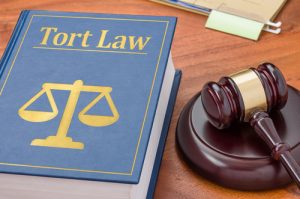 The second bellwether trial of the DePuy Pinnacle Hip Implant multi-district litigation concluded on Thursday, March 17, 2016, with a whopping $502 million verdict against defendants DePuy Orthopaedics, Inc. and Johnson & Johnson. Following months of trial in the Northern District of Texas, the jury found in favor of all eight plaintiffs — five hip implantees and three spouses — who alleged that they were injured as a result of defective Pinnacle Ultamet Hip Implants. This stands in sharp contrast to the first bellwether trial which resulted in a defense verdict.
The second bellwether trial of the DePuy Pinnacle Hip Implant multi-district litigation concluded on Thursday, March 17, 2016, with a whopping $502 million verdict against defendants DePuy Orthopaedics, Inc. and Johnson & Johnson. Following months of trial in the Northern District of Texas, the jury found in favor of all eight plaintiffs — five hip implantees and three spouses — who alleged that they were injured as a result of defective Pinnacle Ultamet Hip Implants. This stands in sharp contrast to the first bellwether trial which resulted in a defense verdict.
Here, the jury found that DePuy was strictly liable for design defects and defective warnings, while Johnson & Johnson was held liable under theories of negligent undertaking and aiding and abetting. Interestingly, though, the jury concluded that Johnson & Johnson did not have actual knowledge of the defects at the time they supplied the hip implants to the plaintiffs. Regardless, the jury found that both defendants were grossly negligent and engaged in fraud, resulting in the award of $360 million in punitive damages — $120 million against DePuy and $240 million against Johnson & Johnson. For detailed breakdowns of the verdict, click HERE.
With only five implant recipients coming out victorious, only a handful of health insurers or Plans will be directly affected by the verdict, but there are larger implications for the subrogation industry in the long term. Mainly, the verdict will shift some bargaining power back into the hands of the plaintiffs, whereas another defense verdict would have drastically undermined their negotiation position. Given the subrogation-friendly structure of the U.S., the ASR Hip Settlement Program, every insurer, Plan, or vendor with a possible lien in this multi-district litigation should be rooting for the plaintiffs in the hopes that we might eventually obtain a similar Pinnacle settlement. That being said, this momentum-shifting ought to serve as a good reminder to be vigilant and diligent.
Subrogating in the mass torts arena is not business as usual. Recovery opportunities are harder to identify, the insureds’ attorneys are often completely unresponsive, and the complex, large-scale nature of the litigation can make it very difficult to follow. The main problem, though, is that subrogation is even more of an afterthought to the plaintiffs and defendants than usual. Most Master Settlement Agreements do not provide adequate lien resolution measures, so typically, lienholders are kept in the dark until they get a letter from a lien resolution vendor. With little or no information about the claimant’s settlement, and scrambling to substantiate their claims long after an agreement has been reached, lienholders are often bullied into accepting low-ball offers for reasons they barely even understand. That is why identifying claims as early as possible and keeping plaintiffs’ attorneys well-advised of your intention to obtain a fair recovery is absolutely crucial. When it comes to mass torts subrogation, patience is a virtue, but silence is not golden.
If you should have any questions regarding the DePuy Pinnacle Jury Verdict article or mass tort subrogation in general, please contact Tim Mentkowski at tmentkowski@mwl-law.com.






